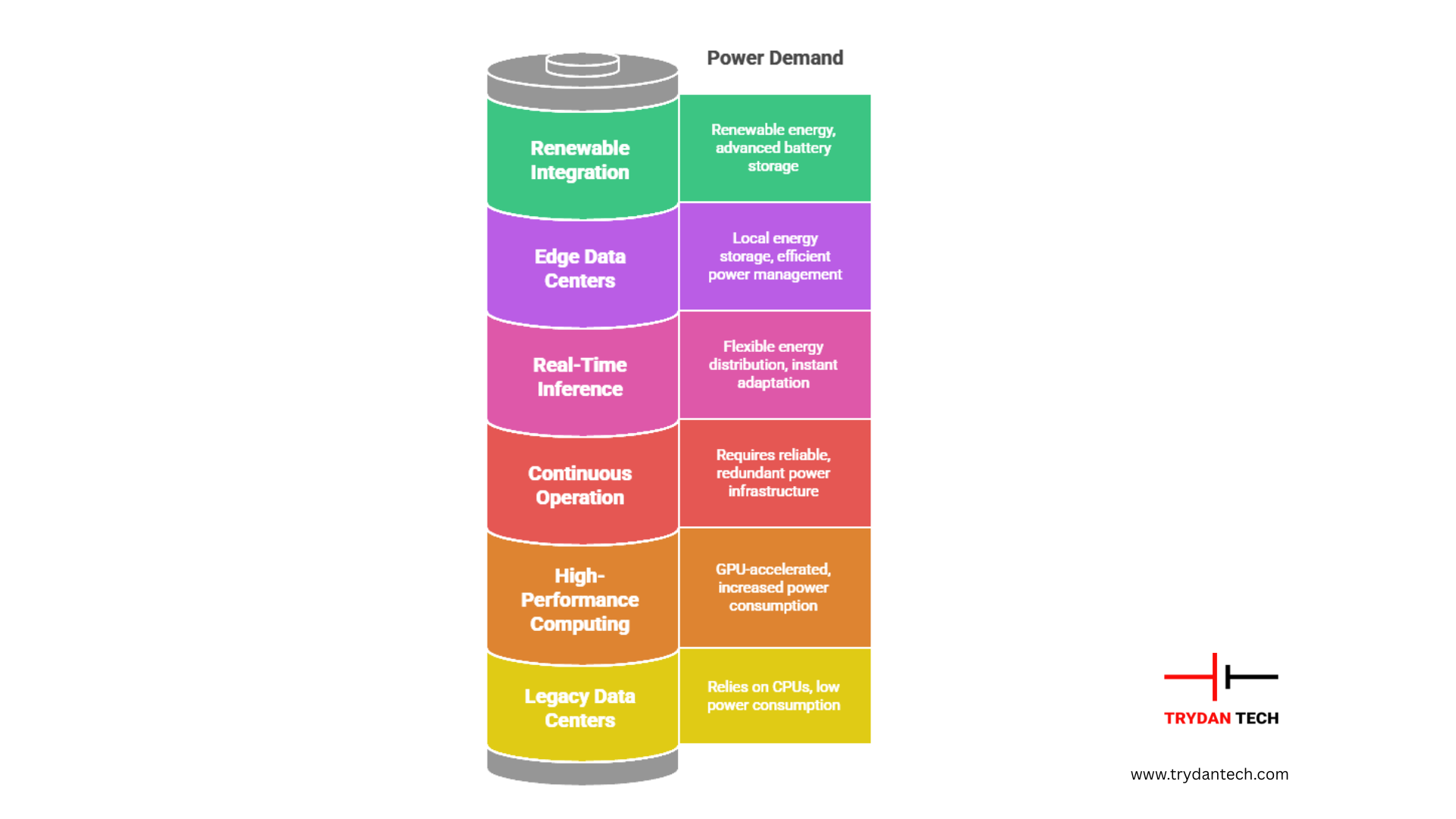
16.10.2025
By Marketing Team

In recent years, data centers have become the backbone of the digital economy. With the rapid expansion of cloud computing, edge processing, and especially artificial intelligence (AI), the demand for high-performance, power-intensive computing infrastructure has reached unprecedented levels.
AI is not just another workload. It is redefining how data centers are designed, powered, and sustained. From GPU-driven training models to edge-based inference systems, the energy landscape of data centers is undergoing a profound transformation. This article explores how AI is reshaping power requirements, the challenges this creates, and the role of advanced energy storage in enabling the data centers of the future.

Artificial intelligence introduces unique demands on data center power infrastructure that go far beyond traditional IT workloads. These include:
Unlike conventional applications that rely on CPUs, AI models such as deep learning and neural networks require GPU-accelerated systems. A single rack can now consume 30 to 50 kW compared to just 5 to 10 kW in legacy data centers.
AI training cycles often run for days or even weeks without interruption. Any power disruption not only halts progress but also results in significant cost losses. This puts unprecedented emphasis on highly reliable and redundant power infrastructure.
AI is not only about training. Real-time applications such as computer vision, language translation, and edge analytics create fluctuating and unpredictable power demands. Data centers now require flexible energy distribution and storage systems that can adapt instantly to these shifts.
As compute density grows, so does heat generation. AI-enabled data centers require advanced cooling systems, which themselves increase energy consumption. Power requirements must therefore account for both compute and cooling loads.
The rise of AI-driven IoT devices, drones, and autonomous systems has accelerated edge computing. These decentralized data centers often operate in remote or less grid-reliable regions, making local energy storage and efficient power management essential.
The environmental footprint of AI-powered data centers is under growing scrutiny. Traditionally, diesel generators have served as backup power, but they are carbon-intensive and highly polluting. With pressure mounting for greener operations, data centers are increasingly turning to renewable integration and advanced battery storage as sustainable alternatives.
To meet the demands of AI workloads, data centers must address new power requirements that go beyond traditional designs:
Despite technological advances, AI-driven data centers face several energy-related challenges:
To address these challenges, advanced energy storage systems such as lithium-ion battery packs and intelligent battery management systems (BMS) are becoming central to data center strategy.
Modern battery backup systems provide more than emergency power. They actively enhance reliability and efficiency by:
An intelligent BMS ensures safety, efficiency, and longevity of energy storage systems. In AI-driven environments, a BMS can:
Energy storage is not only about reliability, it is also central to making data centers greener. As AI-driven operations consume more power, sustainability is no longer optional, it is a necessity. Modern data centers are under pressure from governments, customers, and environmental organizations to reduce their carbon footprint. Traditional reliance on diesel generators is increasingly criticized for high carbon emissions, noise pollution, and fuel dependency. With thousands of data centers worldwide, even small improvements in energy efficiency can have a large global impact.
Battery-integrated solutions are now helping operators bridge the gap between performance and sustainability. Lithium-ion systems, combined with intelligent battery management, provide clean, reliable power without the environmental drawbacks of fossil fuels. They also make renewable energy adoption practical, since intermittent sources like solar and wind can be stored and used on demand.
At Trydan Tech, we recognize that AI workloads bring unique power challenges. Our advanced lithium-ion battery packs and intelligent BMS solutions are engineered for mission-critical environments like data centers, offering:
Whether you need to upgrade UPS systems, design a modular storage solution, or build a high-performance AI-ready data center from the ground up, Trydan Tech delivers tailored solutions to power the future of data processing.
AI is rewriting the rules of data center infrastructure, and power is at the heart of this transformation. Traditional energy systems are no longer sufficient. By adopting scalable battery backup and intelligent energy management, data centers can ensure uninterrupted operations, reduce costs, and achieve sustainability while supporting the rapid growth of AI.
We use cookies to enhance your browsing experience, analyze site traffic, and personalize content. By continuing to use our site, you consent to our use of cookies. Learn more